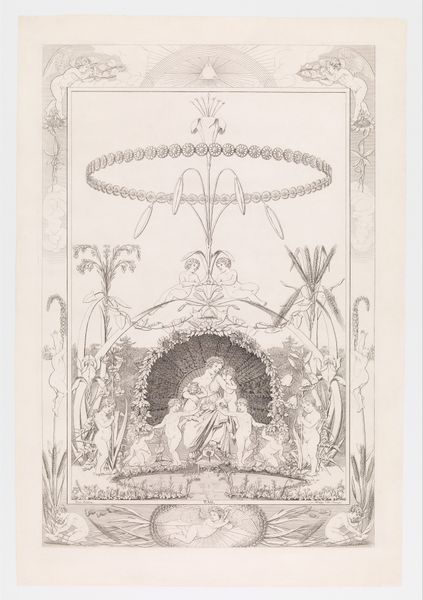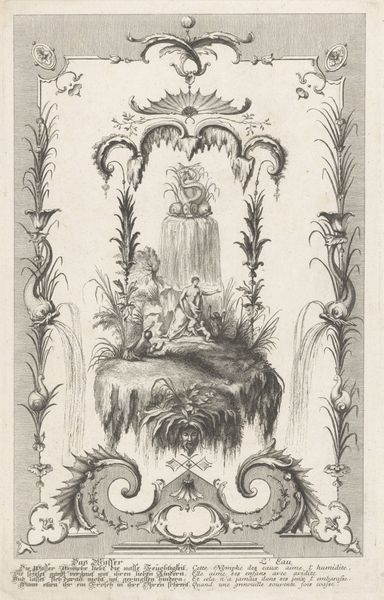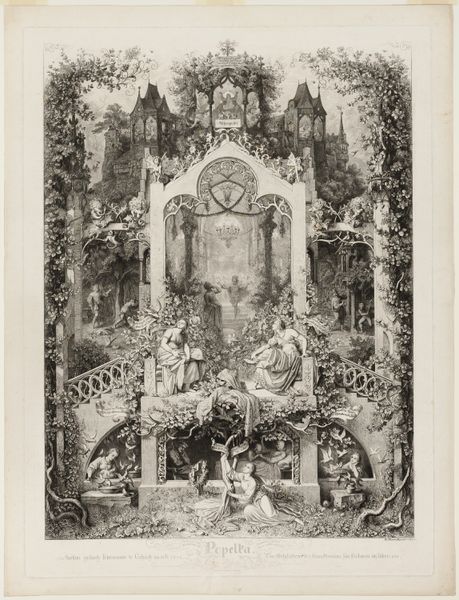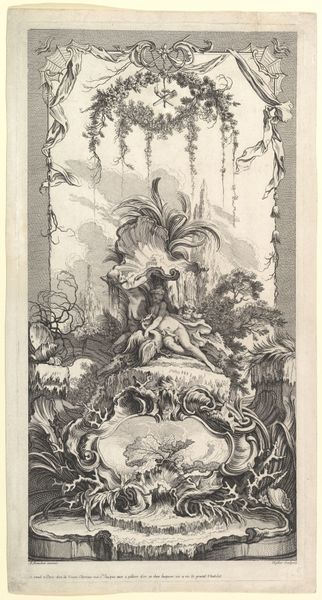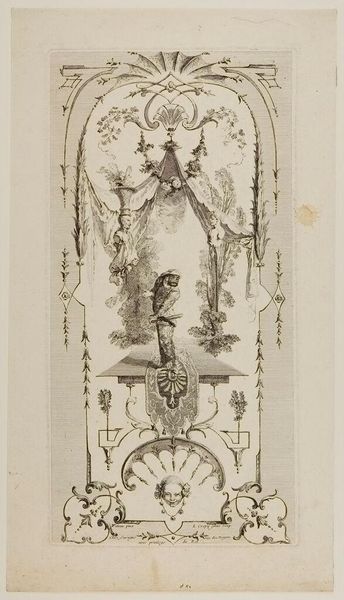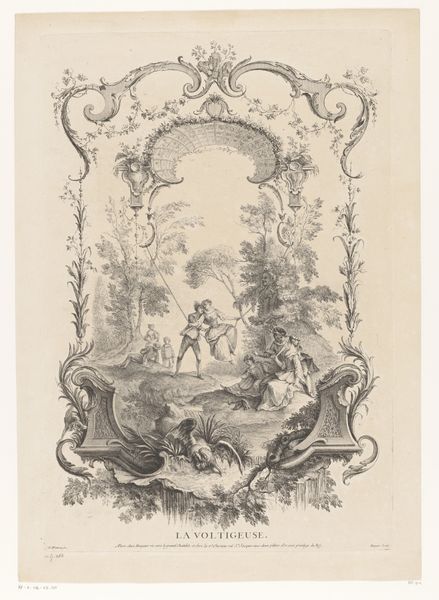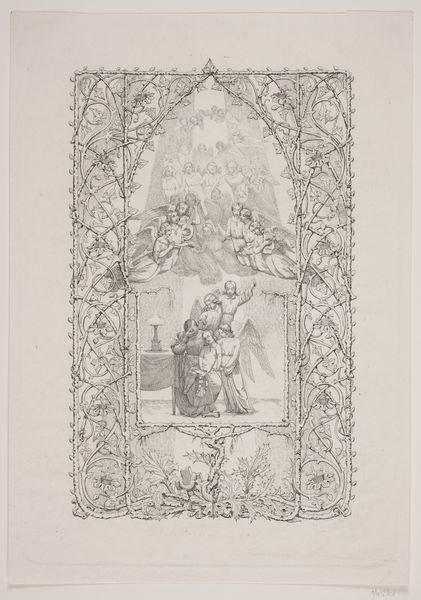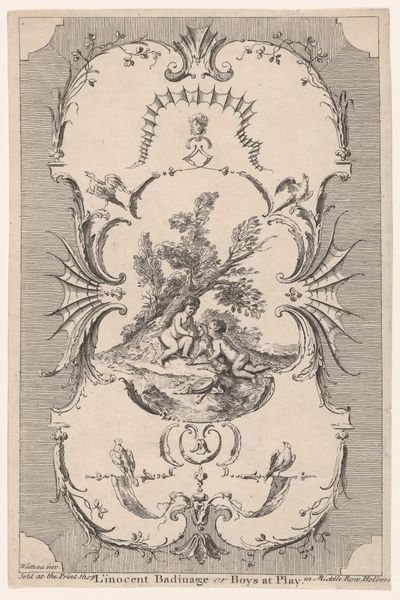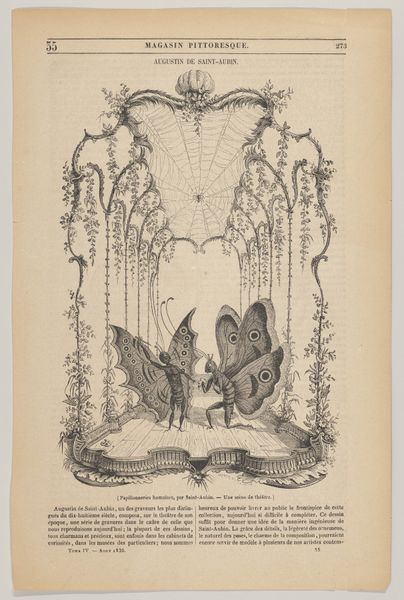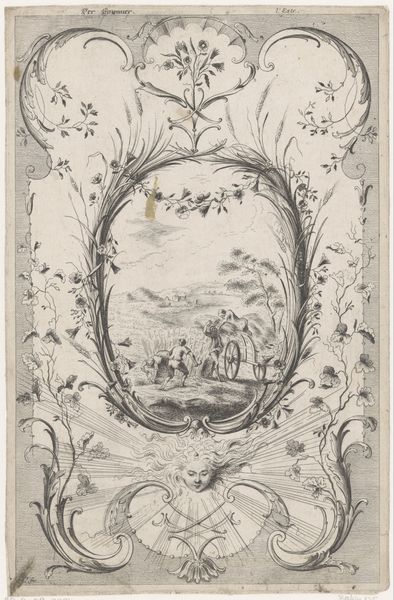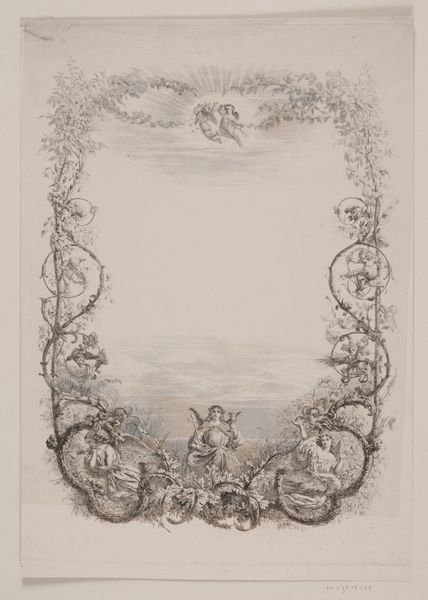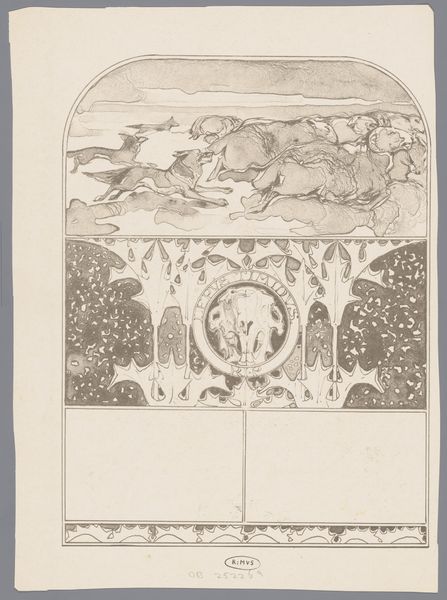
Italian Theatre (Théatre Italien), from Essai de Papilloneries Humaines par Saint Aubin 1751 - 1765
0:00
0:00
drawing, print, etching, engraving
#
drawing
# print
#
etching
#
landscape
#
etching
#
figuration
#
line
#
engraving
#
rococo
Dimensions: sheet: 15 3/8 x 10 1/4 in. (39 x 26 cm)
Copyright: Public Domain
Editor: So, this etching, "Italian Theatre" by Charles Germain de Saint-Aubin, probably made sometime between 1751 and 1765, is full of curious details. What I immediately notice is the theatrical stage populated with insect-like figures. What’s your read on it? Curator: The "Essai de Papilloneries Humaines" series is fascinating because it captures the Rococo era’s fascination with the grotesque and the artificial. Consider the term "papilloneries"—a flighty or frivolous thing. The work satirizes the fashionable elite of the time and their obsession with frivolous entertainment. Notice how Saint-Aubin stages the figures. Editor: It’s interesting how he blends human and insect qualities. How would this have been received back then? Curator: These prints would have circulated within elite circles, almost as caricatures meant for private amusement. Think of it as an early form of political cartooning, targeting specific societal trends or individuals under the guise of fantasy. The “Théâtre Italien” itself was a well-known venue for comedy, so setting this scene there is very deliberate. Editor: Do you think there is a deeper comment being made beyond the simple amusement? Curator: Possibly. The artificiality of the theater and the hybrid nature of the figures could be a commentary on the blurring lines between nature and artifice within high society, a world preoccupied with elaborate costumes and performances. Saint-Aubin prompts us to ask, "What is truly authentic?" What kind of public persona are these figures constructing through dress, presentation, and gesture? Editor: That makes me think about performance, and how constructed so much of public life was in that era. The idea of butterflies—or moths even—performing…it's rather dark when you frame it that way. Curator: Precisely. This work serves as a potent reminder of the layered meanings embedded within seemingly whimsical art, reflecting societal norms and power structures of the 18th century. Editor: Thanks for sharing your insight. Now I have a new way to understand these intriguing butterfly people.
Comments
No comments
Be the first to comment and join the conversation on the ultimate creative platform.
